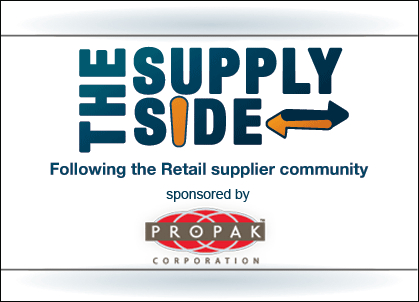The Supply Side: Walmart enforces new ‘Supplier Online Assortment’ initiative
by April 27, 2016 6:47 pm 486 views

Editor’s note: The Supply Side section of Talk Business & Politics focuses on the companies, organizations, issues and individuals engaged in providing products and services to retailers. The Supply Side is managed by Talk Business & Politics and sponsored by Propak Logistics.
––––––––––––––
Suppliers who sell products in Walmart’s brick and mortar stores have been told to provide the retail giant with photographs, written descriptions and other content such as user comments for the Walmart.com site regardless of whether the supplier sells online.
This “Supplier Online Assortment” (SAO) initiative is to be completed by suppliers for every item they sell at Walmart by the end of May.
While many large suppliers already have complied, thousands of smaller suppliers have yet to do so. Walmart recently held a summit in Bentonville for non-compliers to help them get onboard. The task, according to Eric Howerton, CEO of WhyteSpyder, could be daunting for small suppliers, especially if they sell many different items at Walmart.
Howerton and several other supplier service groups held a conference on the topic Wednesday (April 27) in Bentonville. He said this may initially look like a big headache, but it’s more like a huge opportunity for small suppliers to get on equal footing with the large players.
“I have talked with folks high up at Walmart who have told me that this is the best opportunity of all time for suppliers. Get in line with protocol and then go beyond that providing rich and original content to enhance the item’s sales. Those who do this will win over time,” he said.

Clay Bell of Twelve Brands said it’s hard to ask corporate for money toward the Walmart.com business which may be 1% of the supplier’s sales. But that’s the wrong way to look at it. Bell said with lines between online and in-store blurring it’s important to get the content investment right as early as possible even if the supplier isn’t ready to sell online.
Rick West, co-founder of Field Agent, shared research his firm recently did with Walmart shoppers. He said 84% often research products online they plan to purchase in store. That included everyday items like paper towels and laundry detergent, noting that maybe it’s just to see if there is a coupon available.
Small suppliers who might be dominated in a sea of orange in the laundry aisle at the store, may be on more equal footing with a well-crafted online presence.
West said price is the No. 1 thing people check online according to 91% of those surveyed. That said, 85% cited user reviews and 78% cited product descriptions as the things they look for online product searches. Nearly 9 out of 10 said a photo is important in their online searches, even if they plan to buy in the store.
“We found 93% of consumers look online and then purchase in store at least sometimes. Walmart.com customers said they will visit Walmart.com online before they go the store,” West said.
Greg Chandler, a senior marketing director at Walmart, was part of a panel discussing the new SAO requirements at Wednesday’s conference. He said suppliers and retailers can not sell the same way online as they do in brick and mortar. He said mobile shopper apps have to be interactive between store and online operations. Chandler said Walmart needs to have a single database where all the items are located. He said this is important given that consumers are “spearfishing” when it comes to reaching in and cherry picking what they want. He said the Everyday Low Price model that rules Walmart’s brick and mortar is not always in play online.
Chandler said Walmart uses “Dare to Compare,” a comparison program that searches against its main competitors and notifies the retailer when their price is high. Howerton said Walmart cannot move forward as an omnichannel retailer unless all of its suppliers comply and get their data content available online.
Joyce Grippi, a local supplier consultant who does content analysis and optimization for vendors, said Walmart is not the one asking suppliers for this information – it’s their customers who really want it. She said basic compliance means the item is searchable and viewable online, even if it’s not transactional. But once the supply chain component can be figured out it is fairly easy to turn on the transactionable switch which is another sales avenue for many suppliers.
Howerton said this will help Walmart increase its online offerings effectively because the basic setup work will be in place.
“No other retailer has the inventory, warehouse and logistics that Walmart does. Amazon, nor Alibaba stocks near the inventory of Walmart. This could be an advantage for suppliers who want to sell online at Walmart.com as the retailer can help with the supply chain piece,” he added.
Bell told suppliers to spend the money for help on this getting this done ahead of the deadline, but then ask for annual budget toward content management each year because it’s not going away. Grippi ventured to say that “Markendisers,” those individuals who curate, manage and optimize online content would be the next addition to local vendor teams, just like social and consumer marketers were five years ago.
